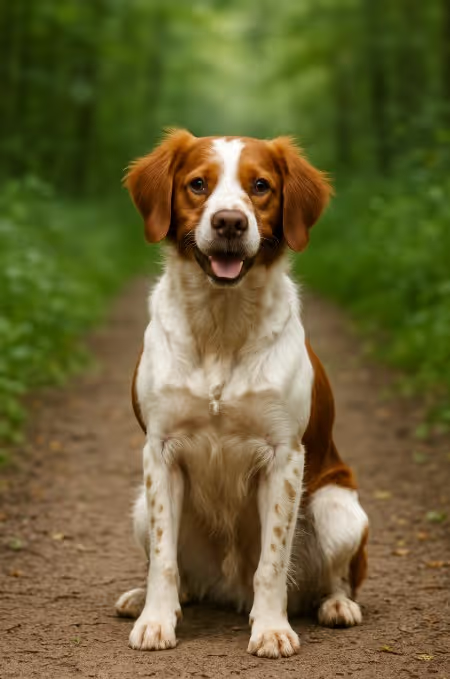The Brittany is an energetic, eager-to-please bird dog known for its agility, affectionate nature, and versatility in both the field and the home. Equally suited for hunting upland game birds or snuggling with the family, Brittanys are intelligent, compact, and full of zest for life. Ideal for active households, they thrive when given a job and plenty of daily exercise.

Originating in the Brittany region of France in the 17th century, the Brittany was bred as a versatile gun dog skilled in both pointing and retrieving game birds. Known in Europe as the Epagneul Breton, the breed gained popularity for its compact size and biddable temperament. It was officially recognized by the American Kennel Club in 1934, with the name shortened to just “Brittany” in 1982 to reflect its hunting focus and avoid confusion with spaniels.
A medium-sized, athletic breed with a compact build and expressive face.
Low-maintenance but benefits from regular brushing, especially after outdoor adventures.
High-energy and endurance-driven—Brittanys need daily outlets for their physical and mental energy.
Eager learners that respond exceptionally well to praise and consistent routines.
Feed a balanced, high-protein diet that supports athleticism and lean muscle.
Generally healthy but some genetic conditions may occur—breeders should perform standard testing.
Popular in North America, including Canada, among both hunters and active pet owners.
Are Brittanys good apartment dogs?
Not ideal. Their high energy and need for space make them better suited for homes with yards or nearby trails.
Do Brittanys shed?
Yes—moderately year-round. Regular brushing helps control shedding.
Are Brittanys hypoallergenic?
No. Brittanys are not hypoallergenic.
Do Brittanys get along with kids and other pets?
Yes—very affectionate and playful with children and other dogs when socialized early.
Brittany vs Springer Spaniel—what’s different?
Brittanys are typically lighter-boned and more pointer-like in behavior, while Springers are denser and may retrieve more naturally.
Can Brittanys be left alone for long hours?
Not recommended. They can become bored and destructive—ideal for homes with active schedules.
Do Brittanys bark a lot?
Moderately—they’ll alert to new stimuli but aren’t typically nuisance barkers if exercised properly.
How smart are Brittanys?
Very smart and highly trainable—often excel in obedience and field trials.